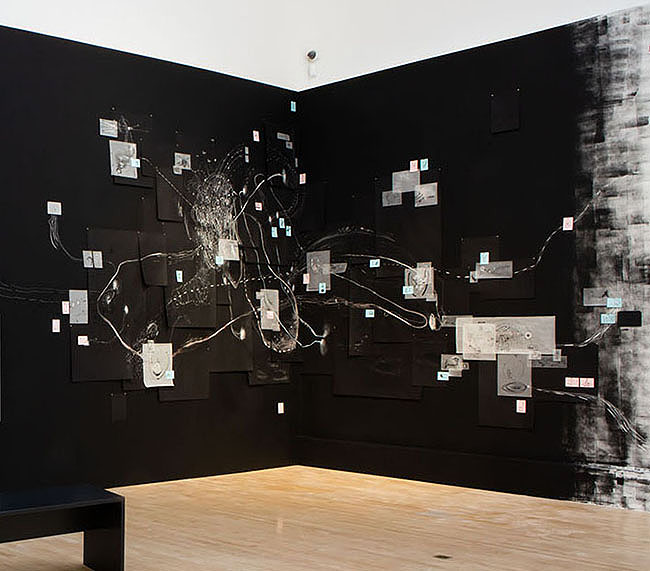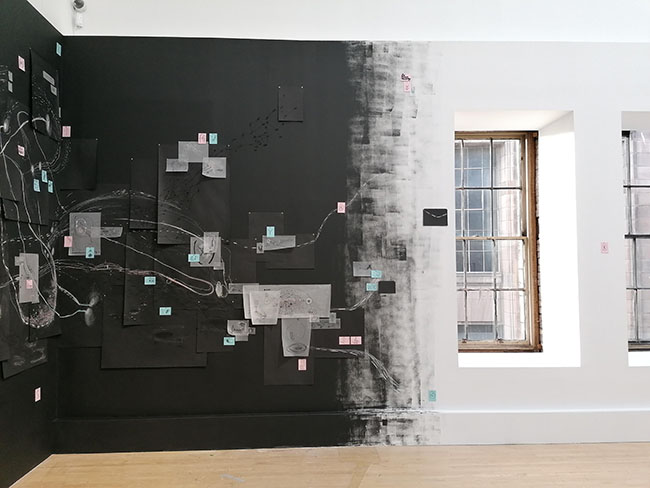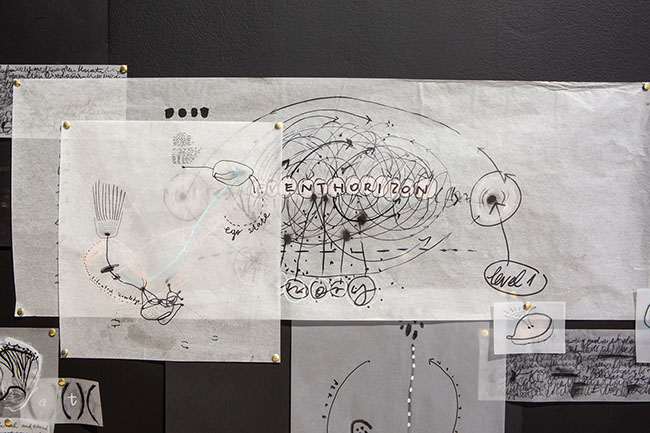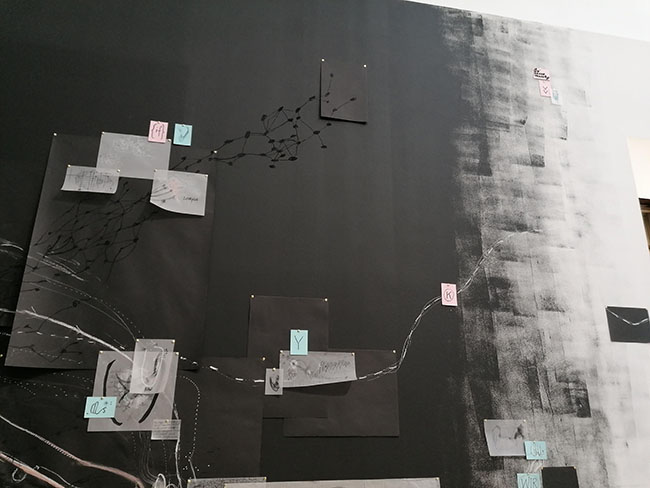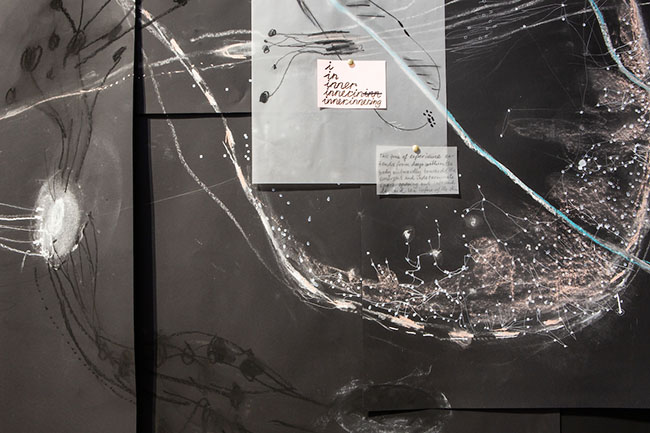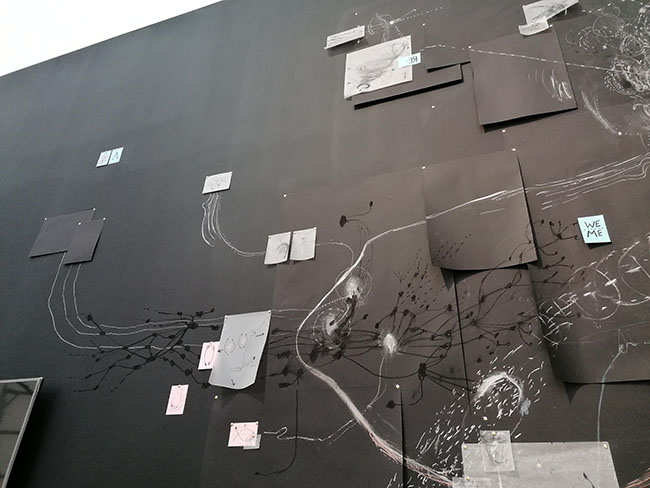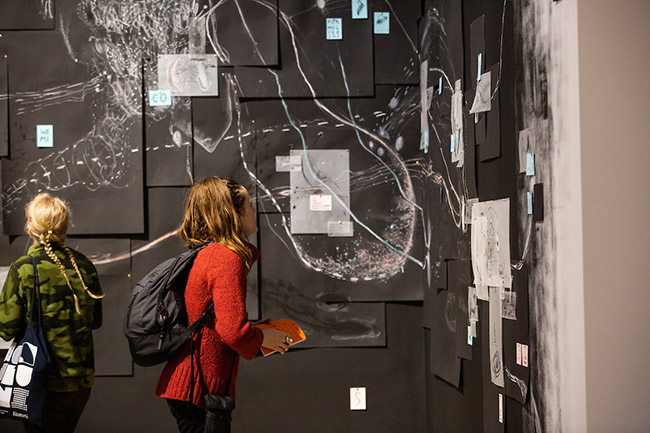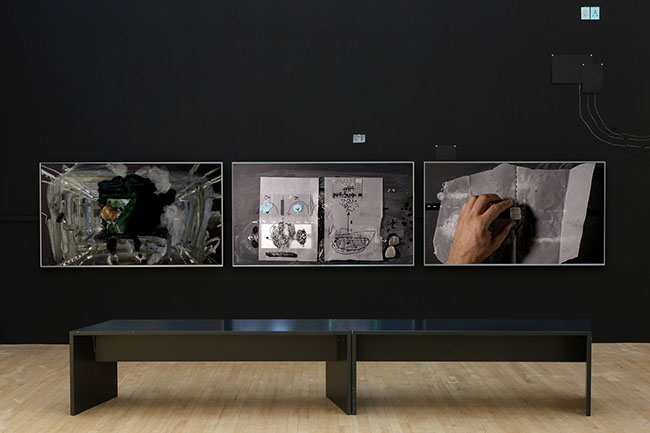The Extended Mind - Following the Fold
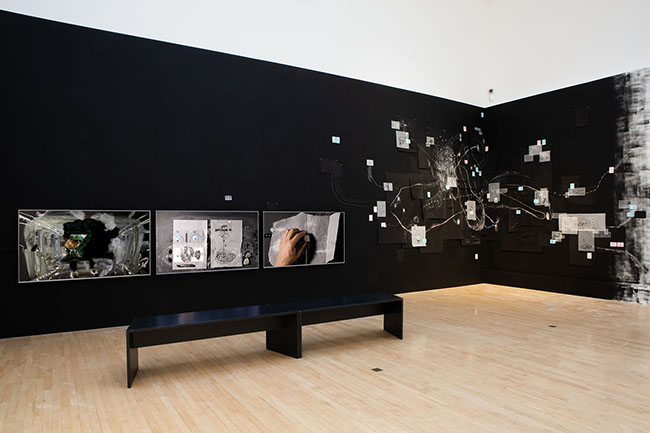
FOLLOWING THE FOLD, 2019
(...) 'Following the Fold', 2019, is a new installation for Talbot Rice Gallery that incorporates Gansterer’s 3-channel video installation untertagüberbau, 2017. Both works build on the artist’s long-term fascination with diagrams, maps, networks and other graphical systems that enable us to structure and communicate ideas. For Gansterer, these systems are the fundamental building blocks for any form of cultural exchange. As he wrote for the publication 'Drawing a Hypothesis' (an interdisciplinary project Gansterer co-ordinated with artists, scientists and creative writers):
‘The pool of diagrammatic images, signs and symbols is a permanent part of our daily perception. The cognitive act of perceiving, translating and allocating occurs continuously when we compose thoughts and receive or process information. This process of sense-making always happens by establishing relations and through drawing connections: the structures of the semantic relationships embodied in the anatomical organisation of our brains allows us to interact with others by means of language and behaviour and is a diagrammatic operation per se … From my perspective, the genesis of ideas is often directly connected with graphical thinking…’
In this way Gansterer comes at ideas central to The Extended Mind. His work recognises that our minds are structured both by abstract concepts and by embodied and situated experiences. Emphasised in his moving-image work he shows these operations are fluid – always shifting and reshaping like the living systems they are supported by. Introducing the body through the use of hands - often manipulating thick, viscous materials - their animated characteristics also speak of the cognitive role of time and transition: the mind extends across time as well as space. Elements are continuously remade and reformed.
The use of specific signs and symbols derives from a process Gansterer terms a ‘translecture’. Meeting with people or listening to them talk about a particular subject, he will draw and operate with objects and materials creating constantly shifting ad-hoc diagrams as he listens, in order to make visible and feel out the ideas that fleetingly come to mind. The way in which sketching itself forms part of the process of thinking has been used as an example for the extended mind theory. As Andy Clark put it in Natural-Born Cyborgs: ‘the iterated process of externalizing and re-perceiving turns out to be integral to the process of creating the art work’. The role of other people in constituting ideas speaks too of the socially extended nature of the mind. 'Following the Fold' was made whilst Gansterer was listening to various talks and lectures available on the internet about space-time relationships, string theory, quarks, anti-matter, black holes, mirror neurons and theories of mind. As he states, ‘I find this liminal zone very inspiring where (hard) science facts melt into speculative fabulation, where science turns into fiction, science = fiction.’ (...)
(excerpt from the exhibition catalogue)
Exhibited at:
"THE EXTENDED MIND" 2 November 2019 - 1 February 2020
'The Extended Mind' proposes that our cognition – that is our mind, thoughts, reasoning, perception, imagination, intelligence, emotion and experience – does not just take place within our brains. It also takes place through our bodies and the broader world and enabled by all the tools, technologies, institutions, materials and techniques we might use to orientate our understanding of where we are in the world. From shadow puppetry of extinct animals, to videos exploring the impact of electromagnetic waves on our thoughts and cultures, to robots that learn through contact and the idea that digital technology is driving us towards a new collective sense of self, 'The Extended Mind' is set across a diverse series of journeys to other real and imagined places.
With work by Gianfranco Baruchello, Marcus Coates, Marjolijn Dijkman, Nikolaus Gansterer, Joseph Grigely, Agnieszka Kurant & John Menick, Myriam Lefkowitz, Daria Martin, William McKeown, Goro Murayama, Angelo Plessas, Magali Reus. Curated by Miranda Anderson, Tessa Giblin and James Clegg at Talbot Rice Gallery, Edinburgh, in Scotland.
